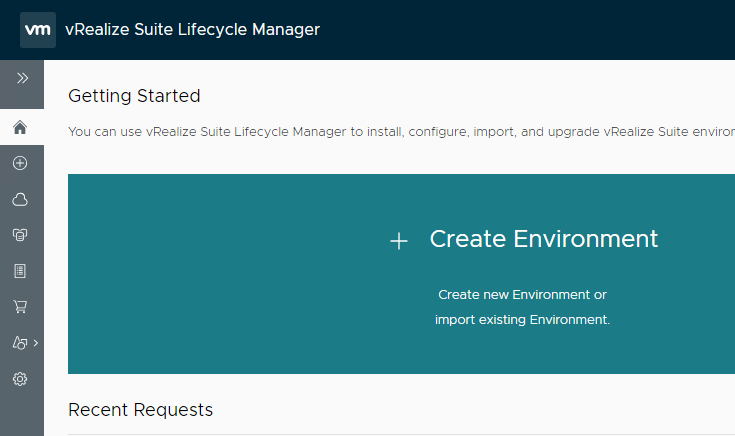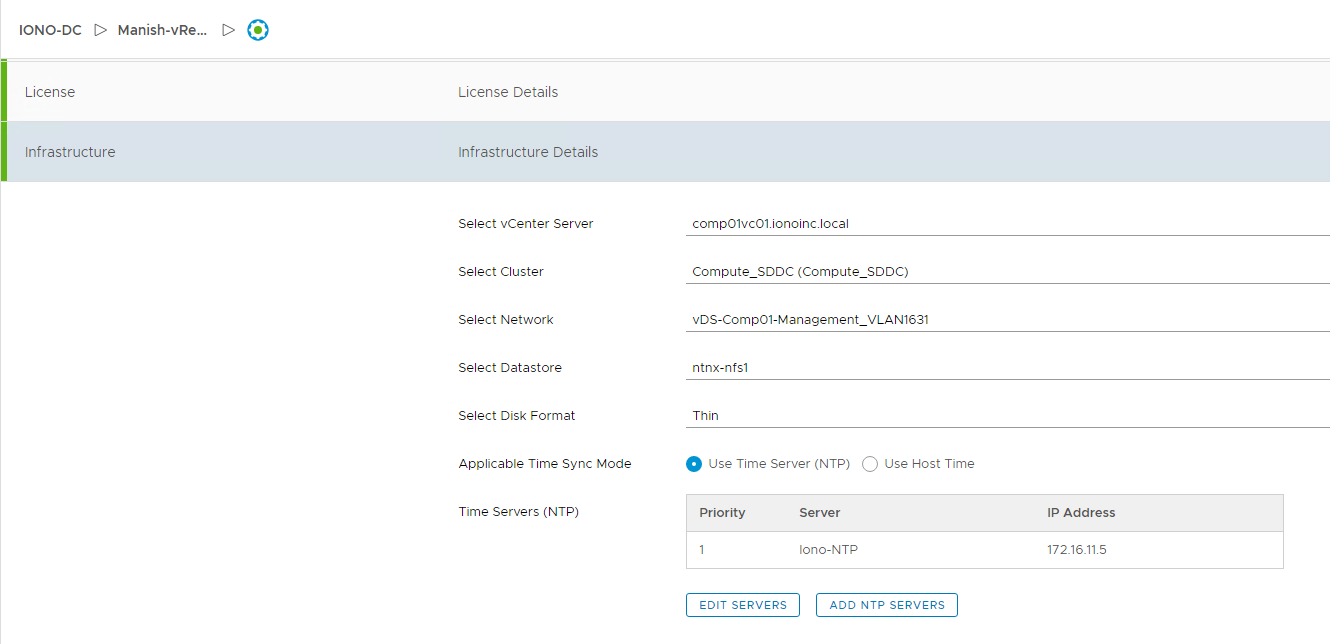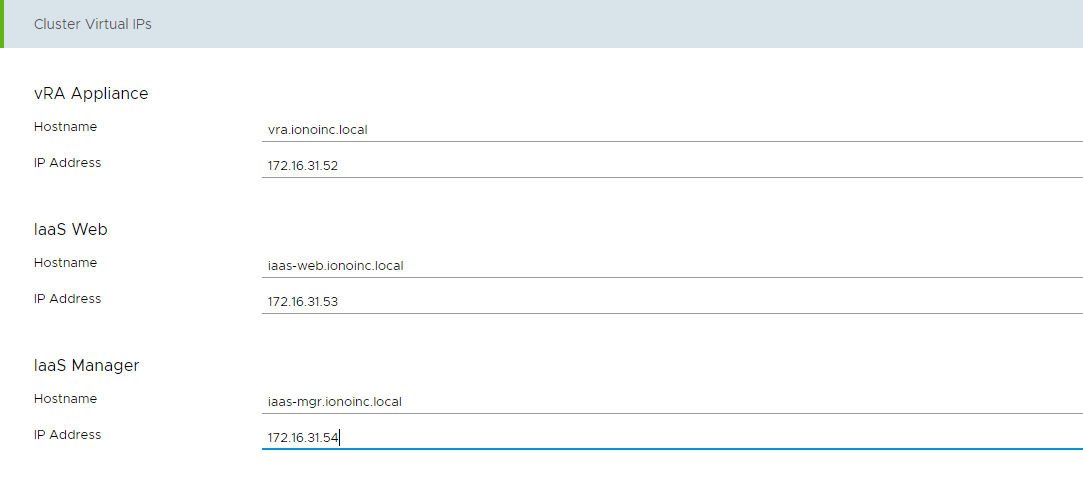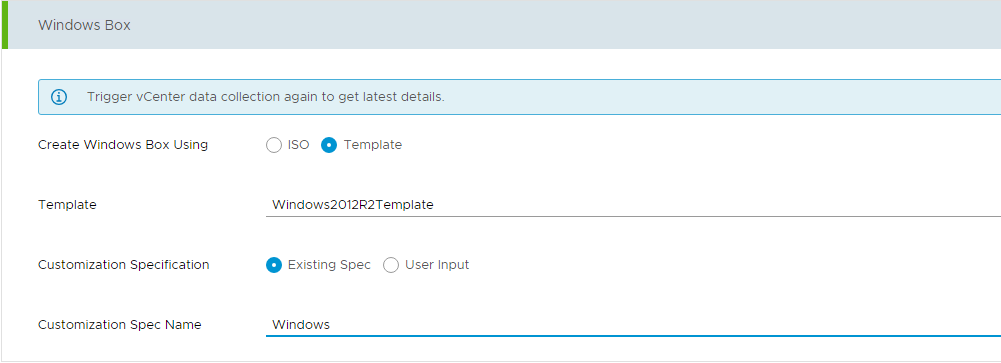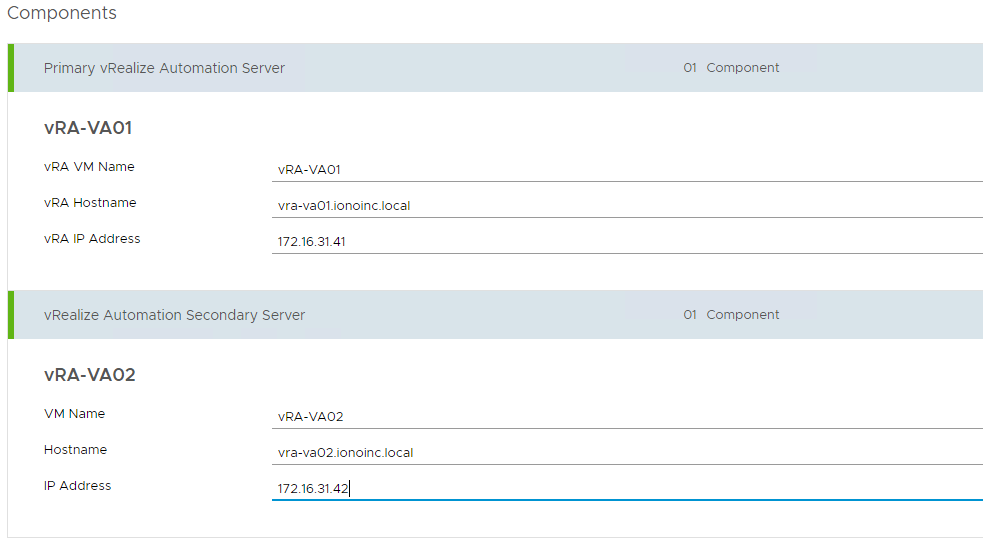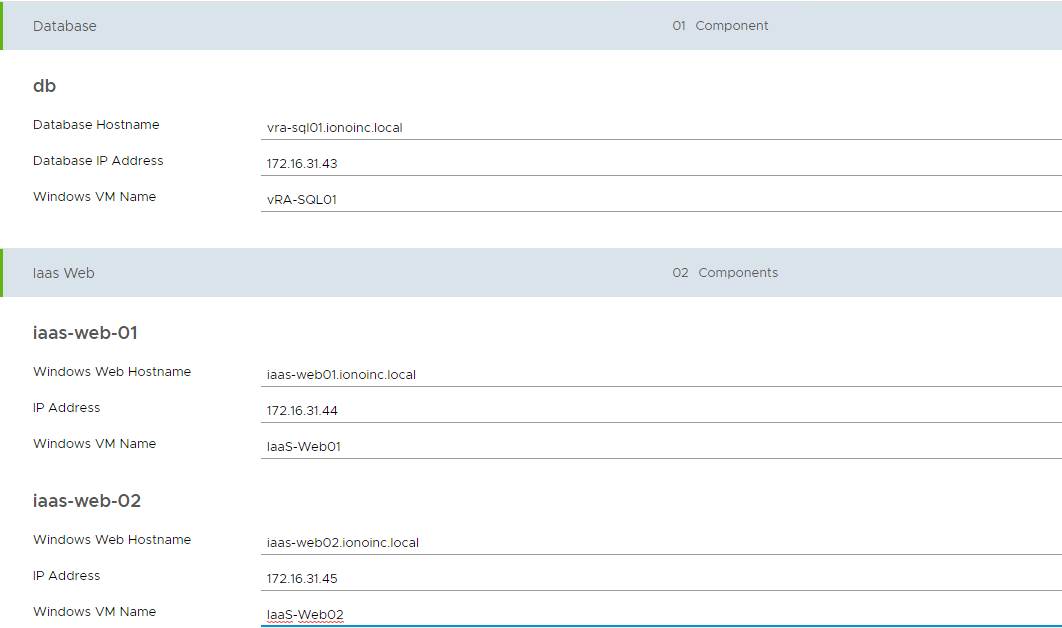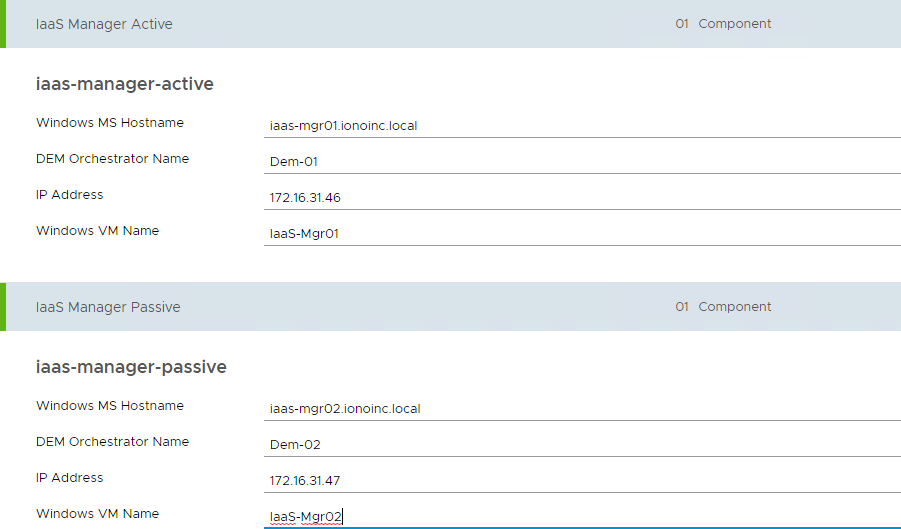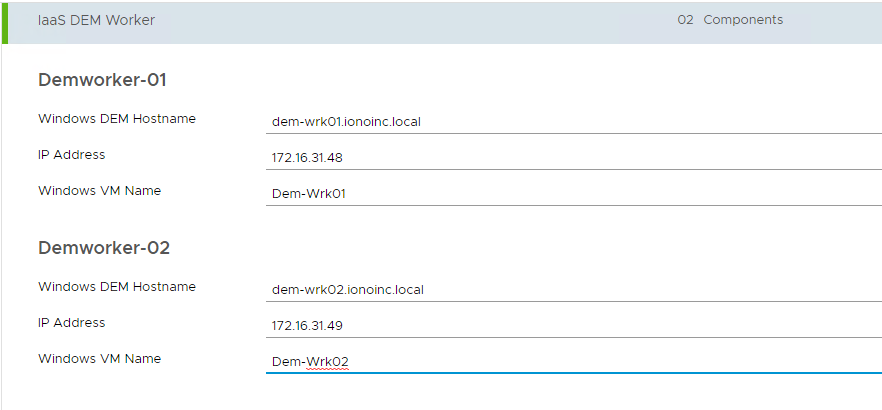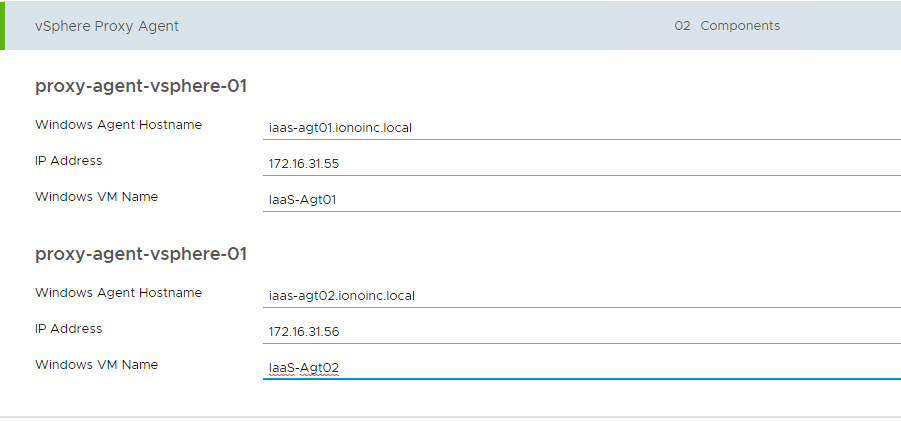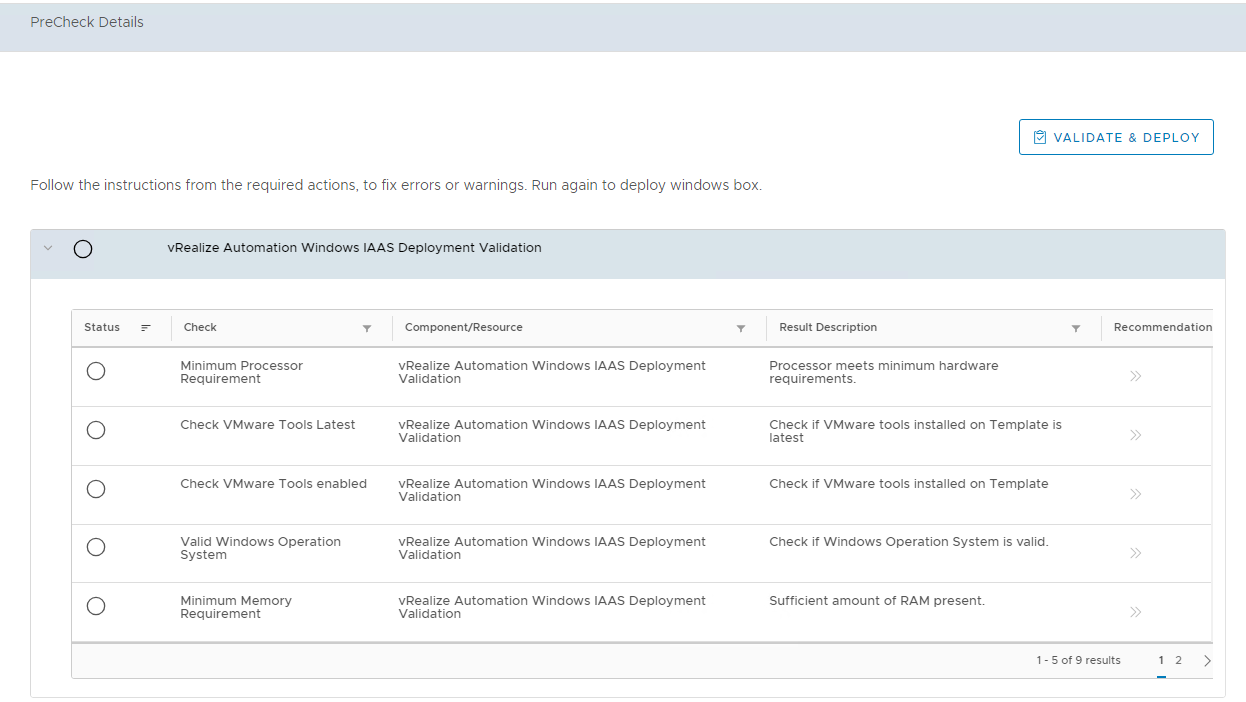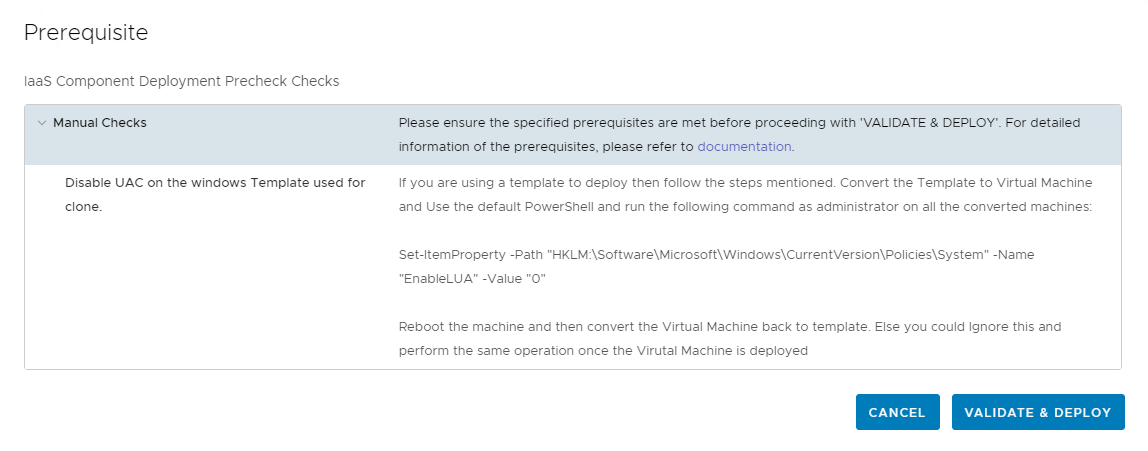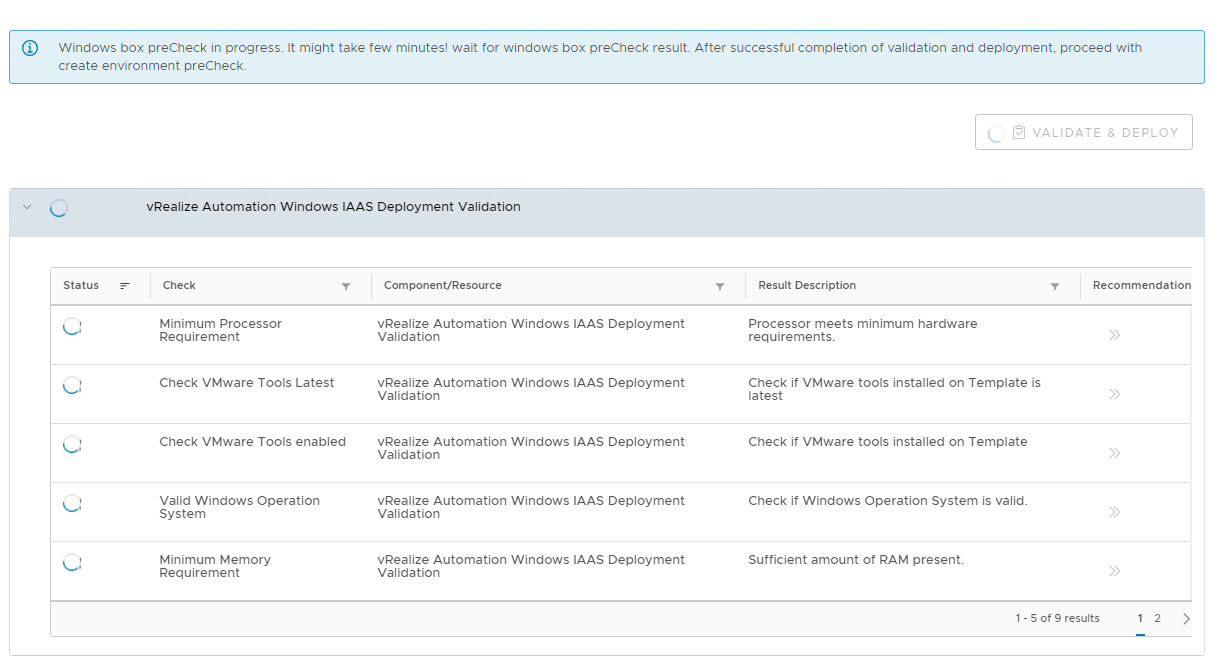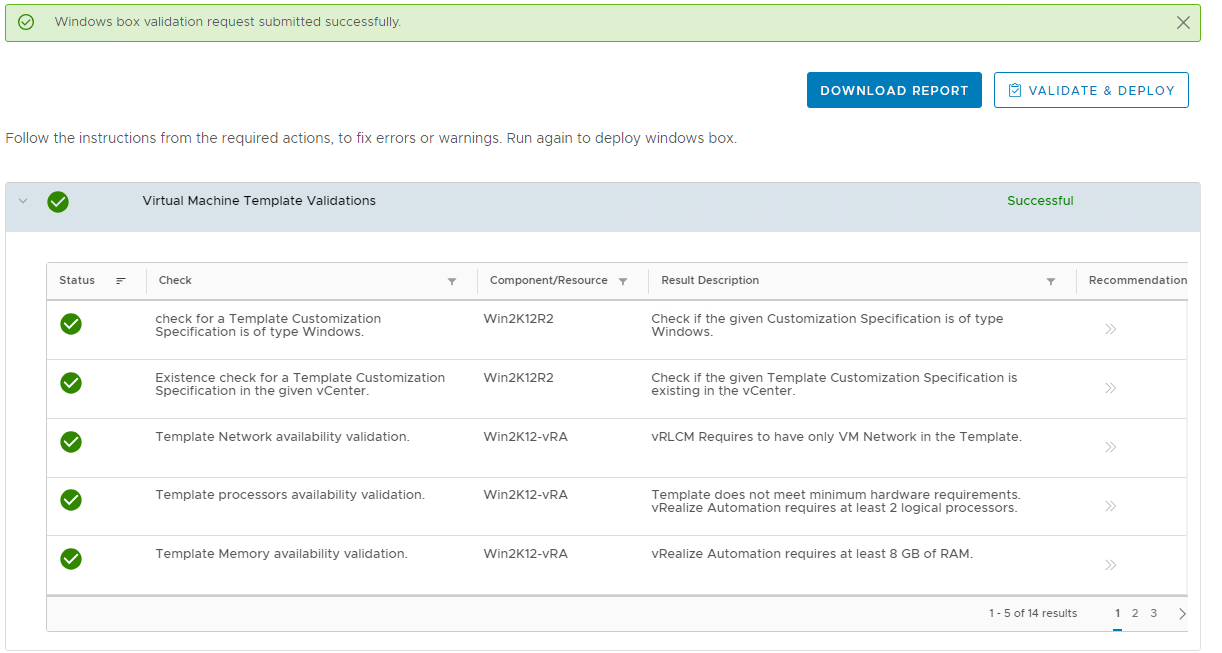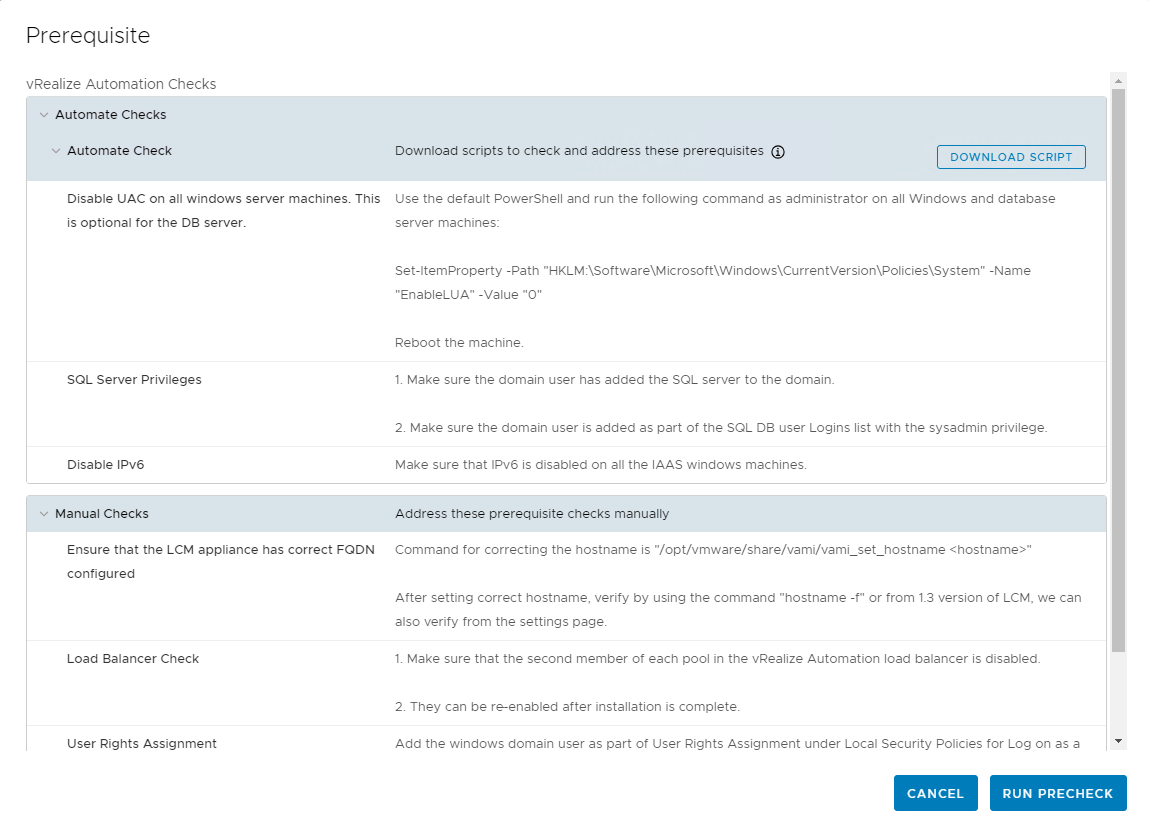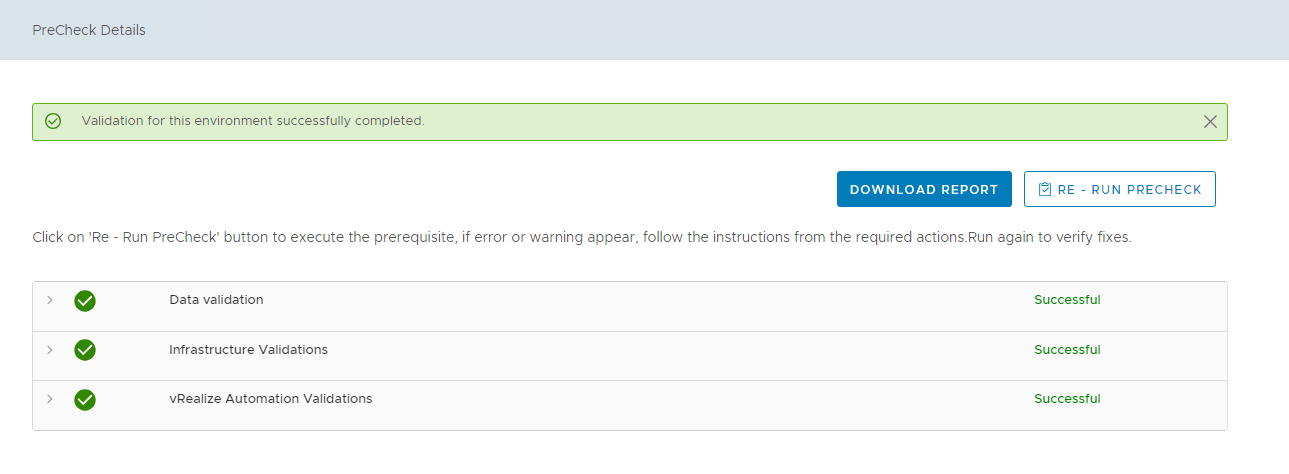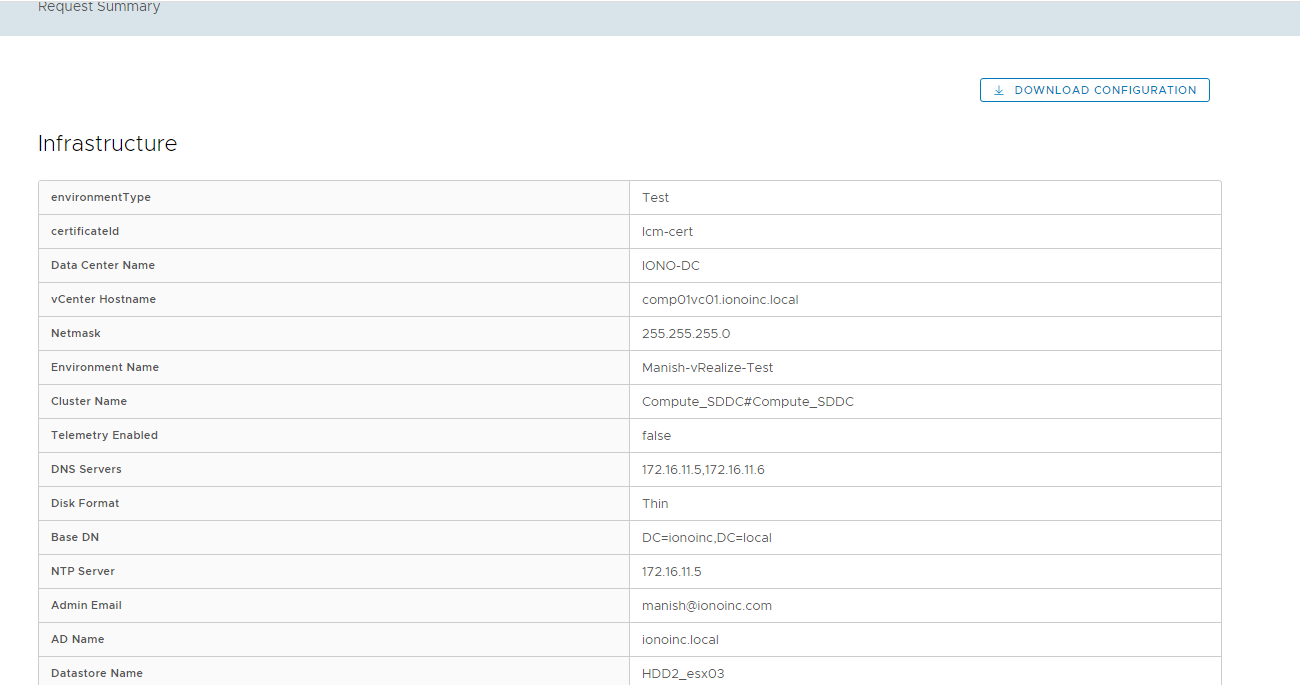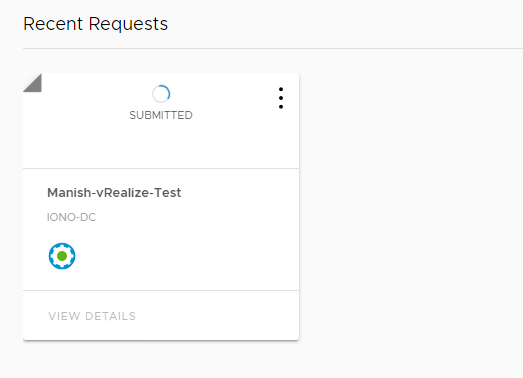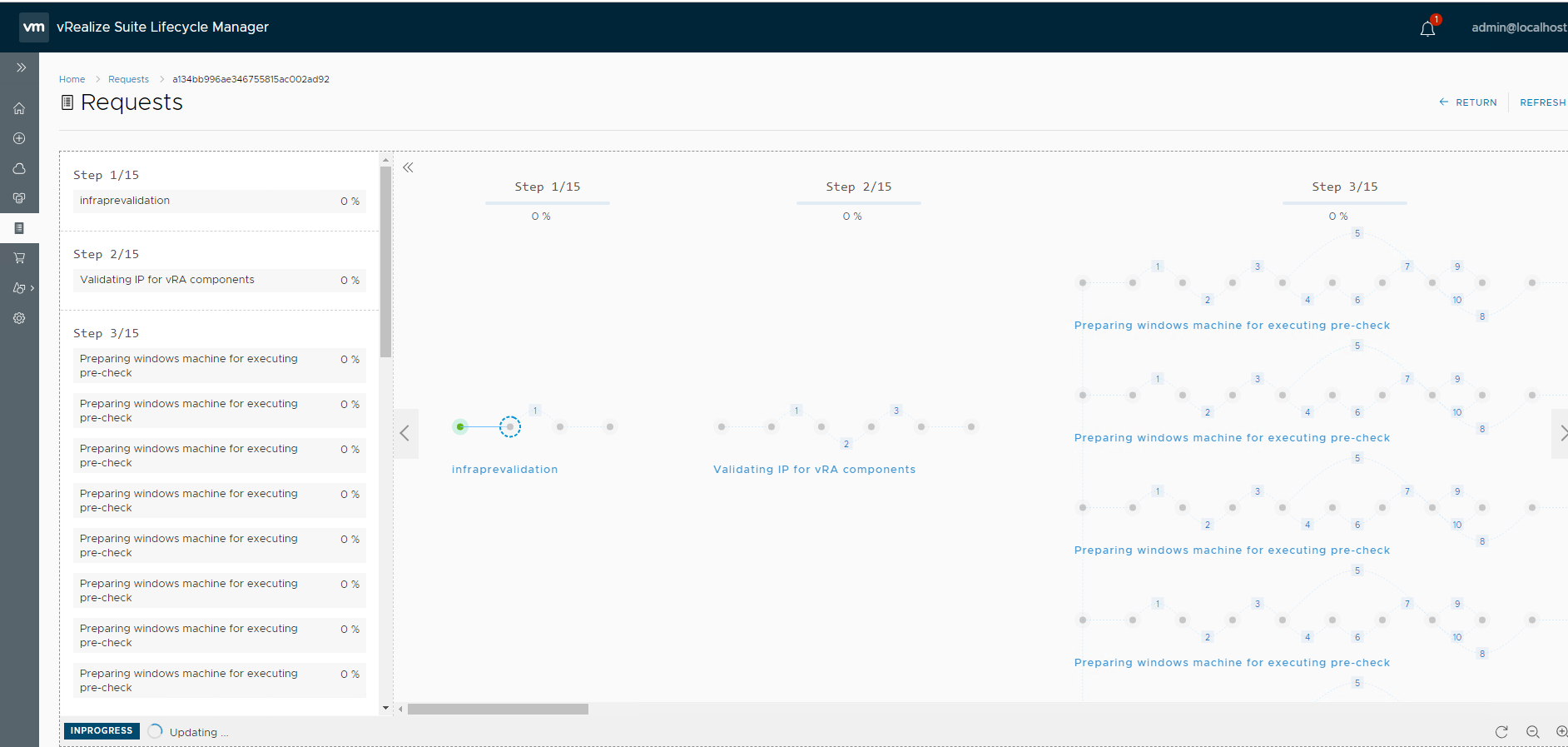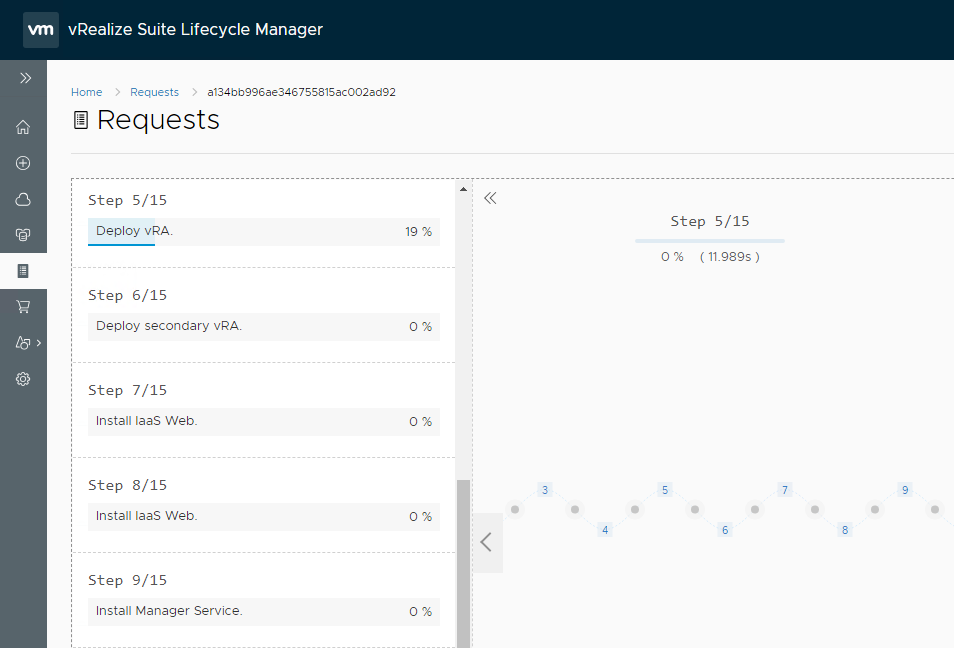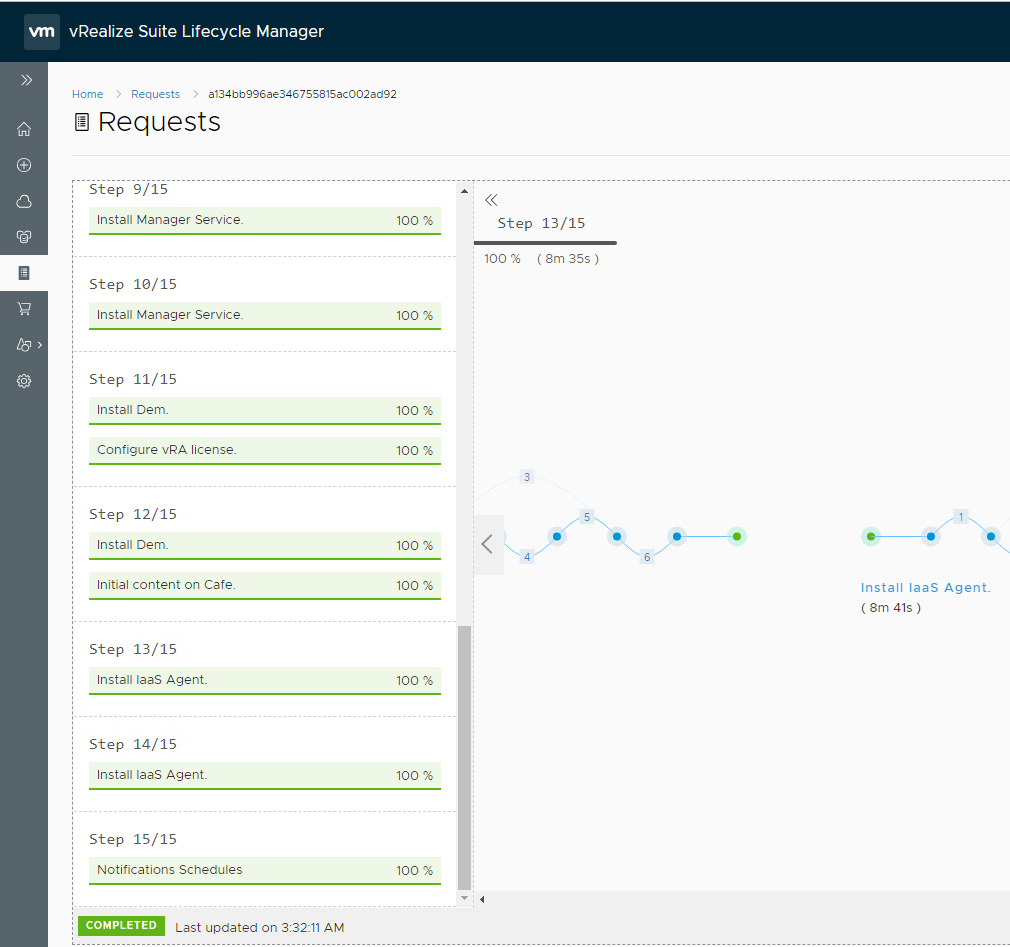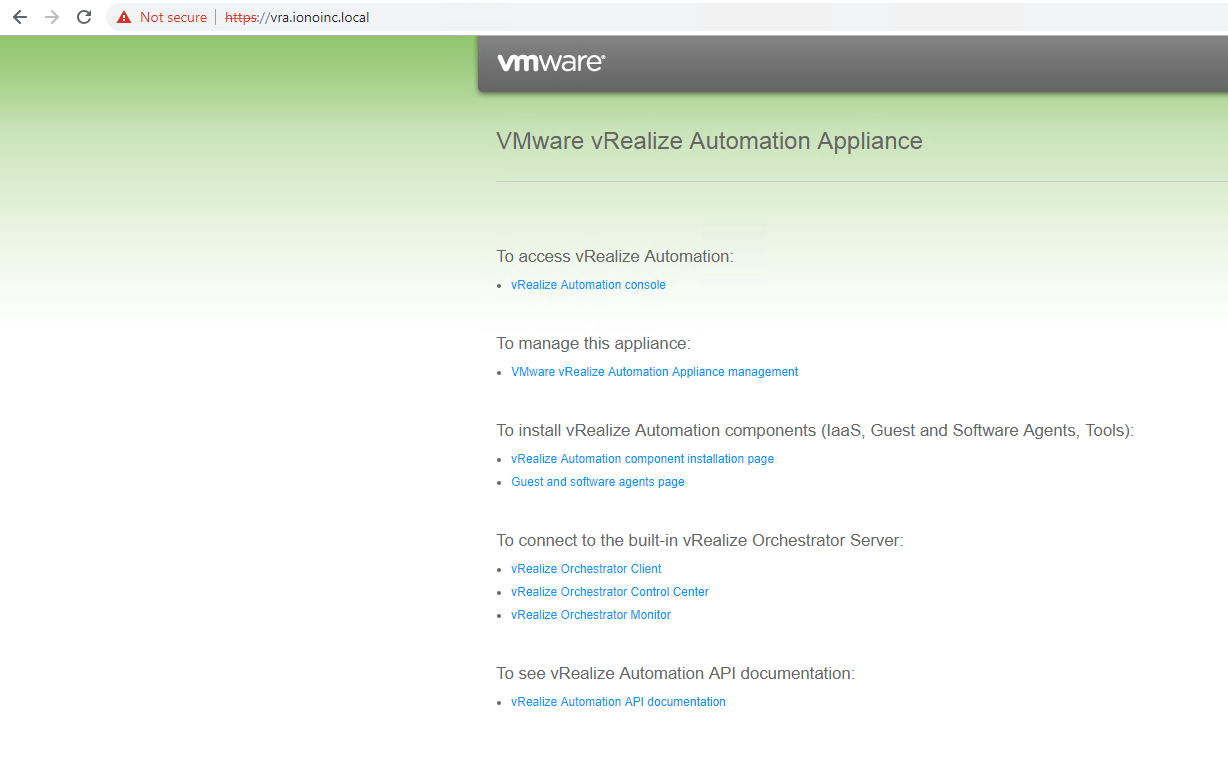In first post of this series, I talked briefly about what vRealize Suite Lifecycle Manager is and its capabilities. Also I covered the installation and initial configuration settings of the appliance.
In this post I will walk through steps of deploying vRA 7.4 distributed install in automated fashion using vRLCM.
Before trying vRLCM, I did a vRA distributed install manually because I wanted to understand the flow of distributed install. If you are new to his topic then I would suggest reading below posts before you can start using vRLCM to automate deployments:
1: Introduction & Reference Architecture
2: Lab Setup
3: Load Balancer Configuration
4: vRA Distributed Install (Manual)
Let’s get started with vRLCM.
First we have to create an environment. From home page click on Create Environment.
Specify following:
- Datacenter: Which you created earlier
- Environment type: Valid selection are Development, Test, Staging and Production. Since this is my test environment I selected test.
- Environment name: Name which makes sense to you.
- Password: Default password for products that will be added in this environment.
Select the products which you want to install using vRLCM in current environment. I started with vRA 7.4 and did not select any other product.
Select the deployment type and hit next.
Accept EULA and hit next.
Enter the vRealize suite license key and hit next.
Select vCenter/Cluster where VM’s provisioned vt vRLCM will sit and specify the network to which these vm’s will connect and the placement datastore.
Select disk format and add your NTP server here for time sync across components.
Specify the network details and hit next. These settings will be pushed into the VM’s which vRLCM will be deploying soon.
Select certificate for the components. At this point of time you should have a certificate created under Settings > Certificates tab.
Optionally you can provide product specific certificates as well.
Specify credentials for the vRA components. vRLCM will connect to all components using the account details specified here.
VMware recommends to use a service account with local administrator rights granted for this account.
If you select “Configure Windows Box” , then vRLCM will deploy windows vm’s (iaas-web, iaas-manager, dem hosts etc) on your behalf. This feature was introduced in 2.0.
Note: If you do not select the configure windows box option, then you should have your backend windows vm already prepared with all necessary prerequisites for vRA deployment.
Under Cluster VIP, specify the VIP address for the vRA appliance, IaaS-Web and IaaS-Manager.
Note: At this point of time you should have your DNS records ready and a CNAME corresponding to each vip created.
Also your load balancer configuration should be ready where secondary member in each pool set to disabled and monitors set to None. Please read this post of mine to know more on load balancer requirements.
If you selected the configure windows box earlier, then you have to either specify an iso or windows template here. vRLCM will use iso/template to deploy windows vm on your behalf and then configure it.
To speed up deployment, it’s advisable to use a pre-configured template and a guest customization specification file created in vCenter.
Now we have to specify details for each component that will be forming our vRA stack. It includes:
- Name of the vm
- Hostname : Use fqdn here
- IP address
Once you have specified all details, proceed to next page and click on Validate & Deploy.
vRLCM will validate few things in the template which we specified previously and if everything is OK, it will start deploying the windows vm’s.
If any prerequisite is not met, vRLCM will provide info for that. Before hitting the deploy button, fix the missing part and then proceed.
In my case I forgot to disable UAC in my windows template, so i quickly converted it back to vm and ran the powershell command suggested by installer and then rebooted the vm and converted it back to template.
Once you hit Validate & Deploy, a request will be submitted and vRLCM starts deploying the backend vm’s.
In vCenter you will see vm clone task fired and the task initiator (which is my service account for vRLCM)
Once all windows vm’s are deployed and configured, you will see the validation status as successful.
Next is to deploy the vRA appliances. Click on Run Precheck button so that vRLCM can validate if all prerequisites are in place and environment is ready for vRA deployment.
Click on Run Precheck.
Once precheck has passed, hit next to continue.
Under Request Summary page, you will see overall summary of the environment. You can download this configuration, if you want to fire up a similar environment somewhere else. It will download a json file for you, which you can edit and use it in another environment.
Hit submit button to kick off the vRA deployment.
On requests page you can check the progress of the task. If you are new to vRLCM, then you can spend some time here watching the workflow of tasks to understand whats going on in backend.
It took a couple of hours for mine to deploy and configure the distributed vRA.
I validated the setup by hitting my vRA VIP and voila I was able to get in.
To summarize this post, I feel this is a great product from VMware which reduces a lot of administrative overhead and makes the tedious deployment of distributed vRA and other vRealize components so easy.
I will be writing more posts on this topic soon as I have just started exploring this awesome product.
I hope you enjoyed reading this post. Feel free to share this on social media if it is worth sharing

